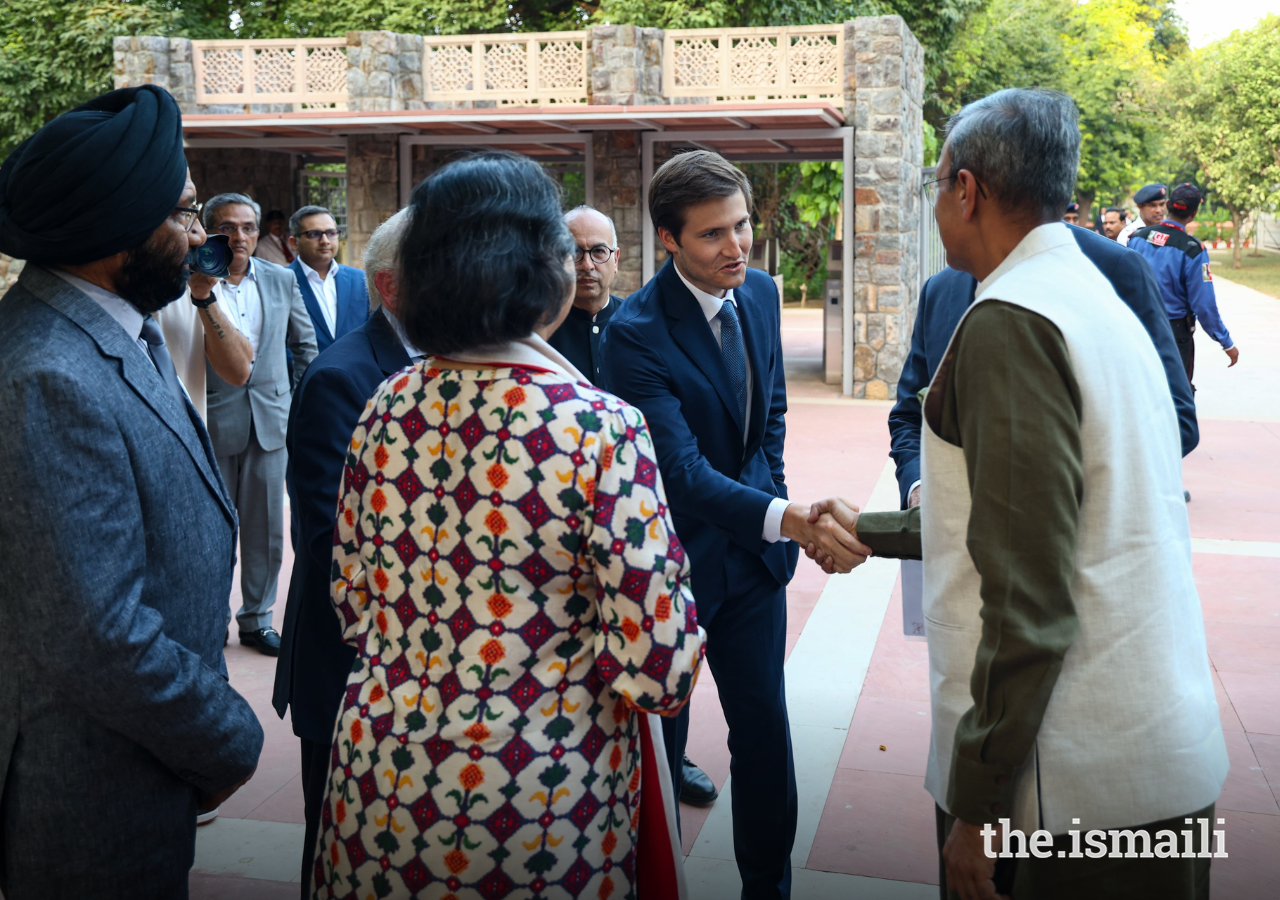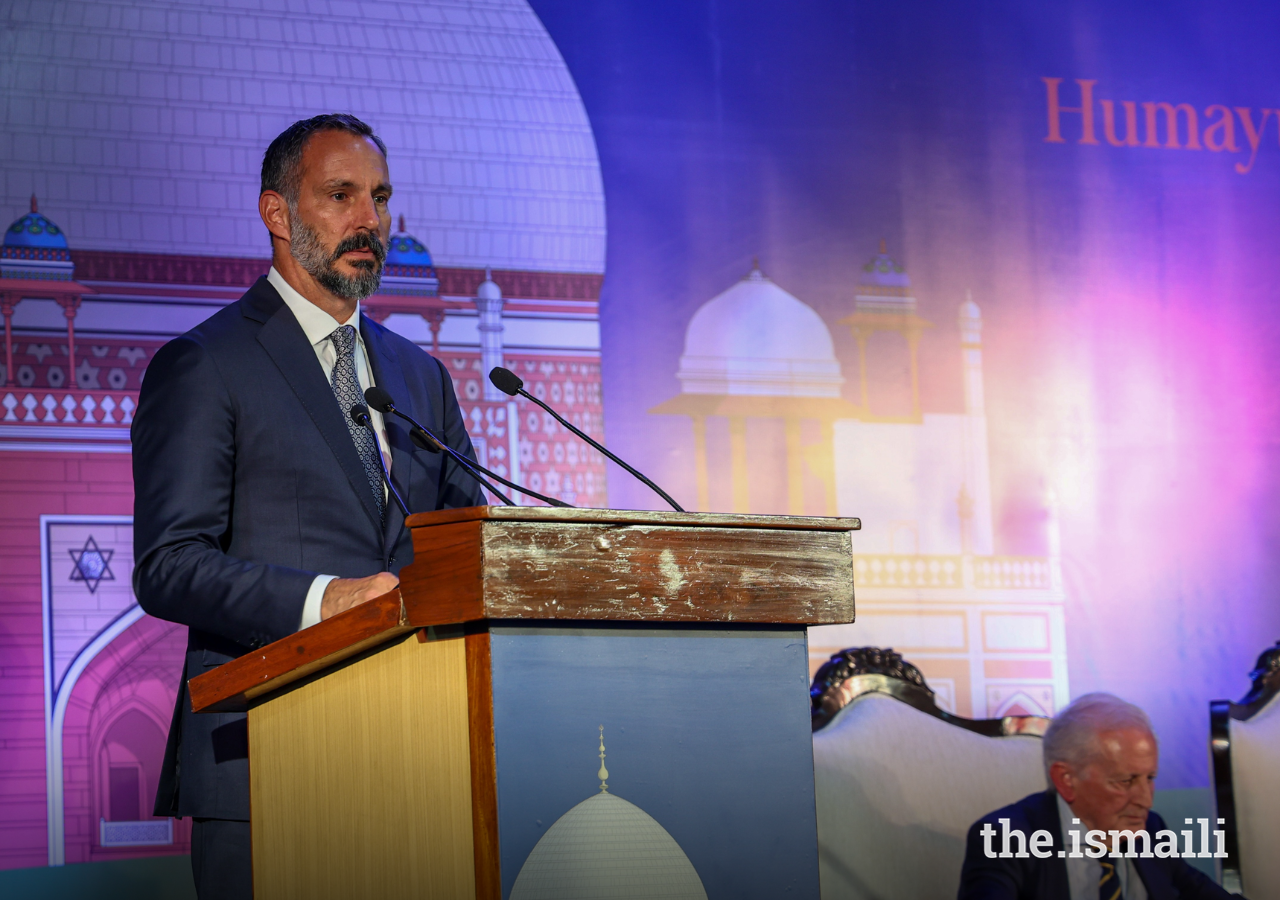The museum, developed by the Aga Khan Trust for Culture (AKTC) in partnership with the Archaeological Survey of India, is the culmination of 25 years of conservation efforts in a 300-acre site that encompasses Humayun's Tomb, Sunder Nursery and the Nizamuddin Basti. Since 2007, more than 60 monuments have been preserved, some 20 of which are on the World Heritage list. In 2018, the Sunder Nursery was opened, providing an oasis of greenery and calm to the citizens of Delhi. Today, these sites receive more than 3 million visitors per year.
“Museums and historic landmarks preserve and reveal the story of humanity. Inherently, they are places that foster connections among people as we delve into our collective, intricate past, and consider how we can collaboratively shape a unified and better future,” said Prince Rahim. “The Museum thus serves as a link, not only joining Humayun’s Tomb with the Sunder Nursery, but also bridging the gap between history and the present.”
India’s newest cultural attraction seamlessly blends modern 21st-century architecture with Mughal-era craftsmanship. The principal structure, located six metres below ground level, houses galleries that rise four feet above the ground and is crowned by a roof, reminiscent of a Mughal garden.
Its interior takes visitors on a captivating journey through seven centuries of Nizamuddin’s rich heritage via a blend of digital experiences, gardens, and galleries that shed light on an important period of India’s history. The building serves as an underground bridge connecting the Humayun’s Tomb complex with the adjacent Sunder Nursery. It also includes a 100-seat auditorium, temporary galleries, and spaces for cafés, meeting rooms, and a library.
A highlight is an immersive gallery featuring a 270-degree screen offering virtual tours of the World Heritage Site’s monuments and gardens. The gallery also includes an animated feature on the evolution of Humayun’s Tomb over 500 years.
The museum displays over 700 artefacts, including Mughal miniatures, manuscripts, coins, astrolabes, celestial spheres, stone inscriptions, glassware, and textiles.
“These artefacts relate stories associated with the World Heritage Site and will enable an enhanced understanding for the esteemed more than a million visitors who visit the Humayun’s Tomb complex annually,” said Gajendra Singh Shekhawat, Honourable Minister of Tourism and Culture, speaking on the occasion.
“This museum is going to be an invaluable addition to the cultural landscape of Delhi,” he added.
Construction of the museum began in 2015 and has been completed with generous support from India’s Ministry of Tourism, Havells India, US Ambassadors Fund, Tata Trusts, Hilti Private Limited, Avanee Foundation, The Saluja Family Trust and AKTC.
“This museum is unique in the way it has been created, as a result of a public-private collaboration that has, in this field, no precedence in India,” said Luis Monreal, General Manager of AKTC. “Possibly no other museum in the world uses such a variety of means to tell a story to the public.”
This weekend also saw the inauguration of the Qutb Shahi Heritage Park in Hyderabad, after more than a decade of conservation efforts led by AKTC, which successfully restored and preserved over 100 historical structures within the necropolis.













